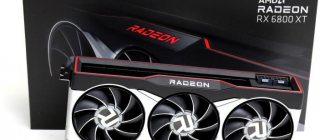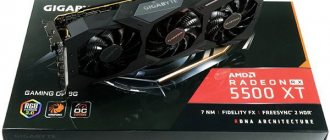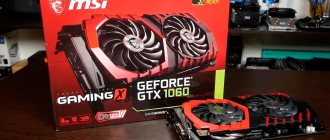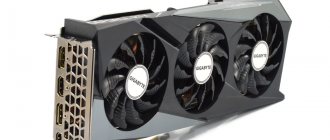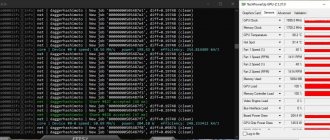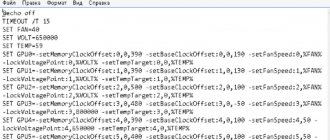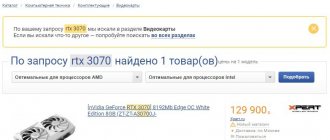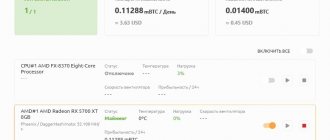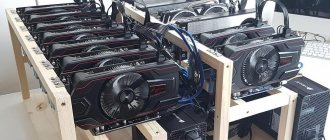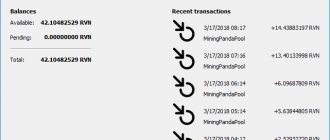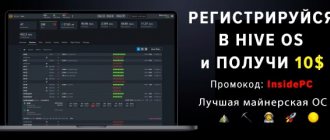Today, not only those who like to pass the time playing computer games, but also those who want to make money from mining are willing to pay a lot of money for video cards with a high level of performance. Increasing the hashrate (block solving speed) of equipment is, if not the most, then one of the most important tasks of any person who wants to increase the profitability of cryptocurrency mining. When one of the best models of video cards for mining, the RX 480, disappeared from store shelves, people paid attention to the new version of the RX 580. Are its characteristics really good, what is its overclocking, power consumption and what competitors does it have - all this can be read in this review.
How to mine on an RX 580 card from AMD with the greatest return?
Just a few years ago, the main buyers of top-end video cards were computer game players. But today, cryptocurrency miners are also actively entering this sector, using the large computing power of the latest generation devices to execute blockchain algorithms. The RX 500 series from AMD immediately attracted the attention of miners with its high performance. Let's look at mining on the RX 580: what capabilities does the older model in the series have and whether it is possible to increase its profitability.
Features and technical characteristics of video cards for mining
The main indicators in demand in mining are the processor frequency and the amount and frequency of RAM. Let's see how well the AMD 580 can provide effective mining based on these indicators:
- GPU frequency. The card uses a Polaris chip, the same as on the 480 and 570 models. The core frequency has been slightly increased, now its stock value is 1257 MHz, in “Boost” mode it reaches 1340 MHz.
- Amount of RAM. The RX 580 card is available in both 4 Gb and 8 Gb, which ensures that it will remain relevant for several years to come.
- The video memory operating frequency is from 1750 MHz, which, combined with a bit depth of 256 bits, promises good results.
- Energy consumption. For the increased performance of the model relative to its “younger sisters,” we had to pay for the increased power consumption. The factory settings provide a consumption of 185W, which makes you think about the cost-effectiveness of purchasing this card.
Different currencies are based on different algorithms, so the requirements for card qualities may differ. For example, take the amount of memory. This indicator is not particularly important for miners of Etherium, Zcash and similar coins, since their algorithm is more sensitive to memory frequency. But in the future, it is possible to optimize the algorithms; in addition, ETH’s DAG file is growing too quickly, which could make cards with a small amount of memory obsolete in just 1 – 1.5 years.
It is also worth mentioning that stock settings never promised high mining results. Overclocking the RX 580 for mining is the most exciting moment, which is associated with the highest expectations. Correctly performed acceleration can raise frequencies by a quarter. But the success of overclocking depends largely on the specific board. This is due to the use of memory chips from various manufacturers (Micron, Samsung, Hynix and others). The capabilities of the cooling system also change, which also affects the stability of the device during overclocking.
The best results in overclocking are shown by cards with Samsung memory, for example Sapphire RX 580, and mining with such a device will bring good money. But Samsung memory cards are in short supply, and purchasing them is quite difficult. Memory from other manufacturers is much less resistant to drawdown and does not provide full overclocking efficiency.
Mini-guide on changing video memory timings using the example of the Sapphire Radeon R9 390 Nitro 8Gb video card
Good day, dear friends!
Many of you already know that there is a “miracle BIOS” from the Overclock.net forum, which slightly improves performance on Radeon R9 290(X) video cards designed on a reference board, and mostly eliminates black screen (black screen), BSOD' ov, it also has other minor amenities, although there are also negative reviews.
There are many optimizations in this BIOS, you can write your own note about each, but I will focus on one of them - video memory timings. For myself and you, I want to note that I decided not only to retell the information from Overclock.net in a simpler and more understandable language, but also to provide screenshots and give reasonable instructions for work in order to save your time in studying and push your own enthusiasm. Go! GDDR5 is a modern and fast type of video memory, widely used in modern video cards. Roughly speaking, like any other memory (RAM), it has frequency and latency - time delays of the signal or, more simply, timings. Now it’s difficult for me to say how they are marked in the BIOS, what they are called and in what order they are located; in all these questions you need to look at the GDDR5 datasheet, their technical characteristics, look for markings, etc. And if you consider that I came across information that the video memory of such video cards as 290(X) and 390(X) are produced by different factories, then their capabilities are slightly different.
The following models are currently best known:
- Hynix H5GQ2h34AFR
- Hynix H5GC2h34BFR
- Hynix H5GC4h34AJR
- Elpida EDW2032BBBG
- Elpida EDW2032BBBG_DEBUG2
- Elpida EDW4032BABG
- Samsung K4G20325FD
To see what video memory you have, you should use the MemoryInfo , which will provide you with more accurate information.
The main differences between the Radeon R9 390(X) and 290(X) video cards are not only in the increased amount of video memory, but also in the chips used. So the 390(X) video cards use only H5GC4h34AJR and EDW4032BABG, and the 290(X) use all the remaining five. It is worth noting that many people usually inadvertently flash the BIOS with support for H5GQ2h34AFR instead of H5GC4h34AJR, which usually leads to instability in operation at best
